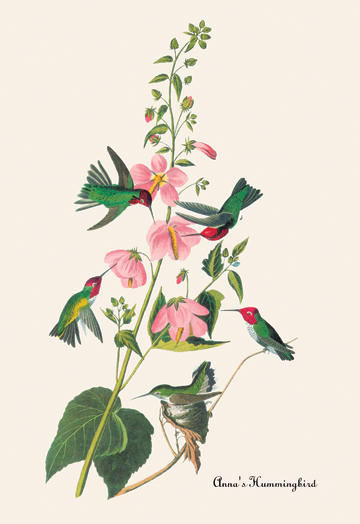Starts and Stops
We get quite a few questions relating to starting and stopping to feed hummingbirds. Usually these questions have to do with when to do what and why. These questions come up so often, we felt these answers deserved an individual page.
When to put up your feeder?
This is a very common question. For those of you that are lucky enough to have hummingbirds all year long, the answer is: anytime you want. However, for the rest of us the answer is: it depends.
Hummingbirds will start arriving in the spring (northern hemisphere time) as early as February in the southern part of the United States, March for the middle United States, April in the upper portions of the United States, and May way up toward Canada and Alaska. Hummingbird can arrive earlier or later depending on the weather. If you have a hummingbird feeder out when they arrive, there is a greater chance the hummingbird will set up house in your area. The best way to track when hummingbirds come every year in your area is to start a journal.
To track when hummingbirds start arriving in your area, put out a hummingbird feeder and keep an eye on it. If a hummingbird finds it within the next three days, make a note of the date in your journal and put it out a week earlier next year. If the local hummingbirds found the feeder more than three weeks after you put the feeder out, try putting it out a few days to a week later next year. After a couple of years entering this information into your journal, you will begin to see a trend.
Where to put feeder?
When you put out your hummingbird feeder, try to place it in a shady area if at all possible. If you have to hang it out in the sunshine, just be aware that the nectar may have to be changed more frequently to prevent it from spoiling. If your hummingbirds are having trouble finding your hummingbird feeder, try changing the location. Maybe move it more toward a favorite flower or plant.
When do hummingbirds Start and Stop eating every day?
Hummingbirds will start eating every morning about a half (1/2) hour before the sun rises and will stop every day about a half (1/2) hour after dark. They will eat 25% of their daily intake of food during the first hour they are awake, and take in a bunch more nutrients like food and nectar just before they go to sleep. It is important to make sure your feeders have nectar during these times.
When should I stop feeding hummingbirds?
First of all, let’s dispel a very common myth. There is nothing that will stop a hummingbird from migrating. Keep the feeders up until you have not seen any for 2 full weeks. This will help straggling hummingbirds in their long journey. For those of you that are lucky en enough to have hummingbirds all year long, the answer is: you don’t have to.
Hummingbirds will start leaving in the fall (northern hemisphere time) as early as August way up toward Canada and Alaska, September in the upper portions of the United States, October for the middle United States, and November in the southern part of the United States. Hummingbird can leave earlier or later depending on the weather. The best way to track when hummingbirds leave every year in your area is to start a journal.
To track when hummingbirds leave in your area watch to see when you see the last hummingbird. Make a note of this date in your journal. Don’t take the hummingbird feeder down until you have not seen a hummingbird for two weeks straight. Stragglers may need some nourishment as they try to beat the weather.
This is worth repeating. Keeping your hummingbird feeder up in the fall will not prevent hummingbirds from migrating. There is nothing aside from captivity to prevent a hummingbird from migrating. They come and go as they please. A late hanging hummingbird feeder can actually help a great deal to a straggling hummingbird in the long journey.
Whatever you do, do not attempt to trap and relocate a late season or stray hummingbird. It is illegal in the United States and many other counties. It may also harm the hummingbirds by causing the little fluff more stress they can handle. Hummingbirds know what they need and where they need to be.





